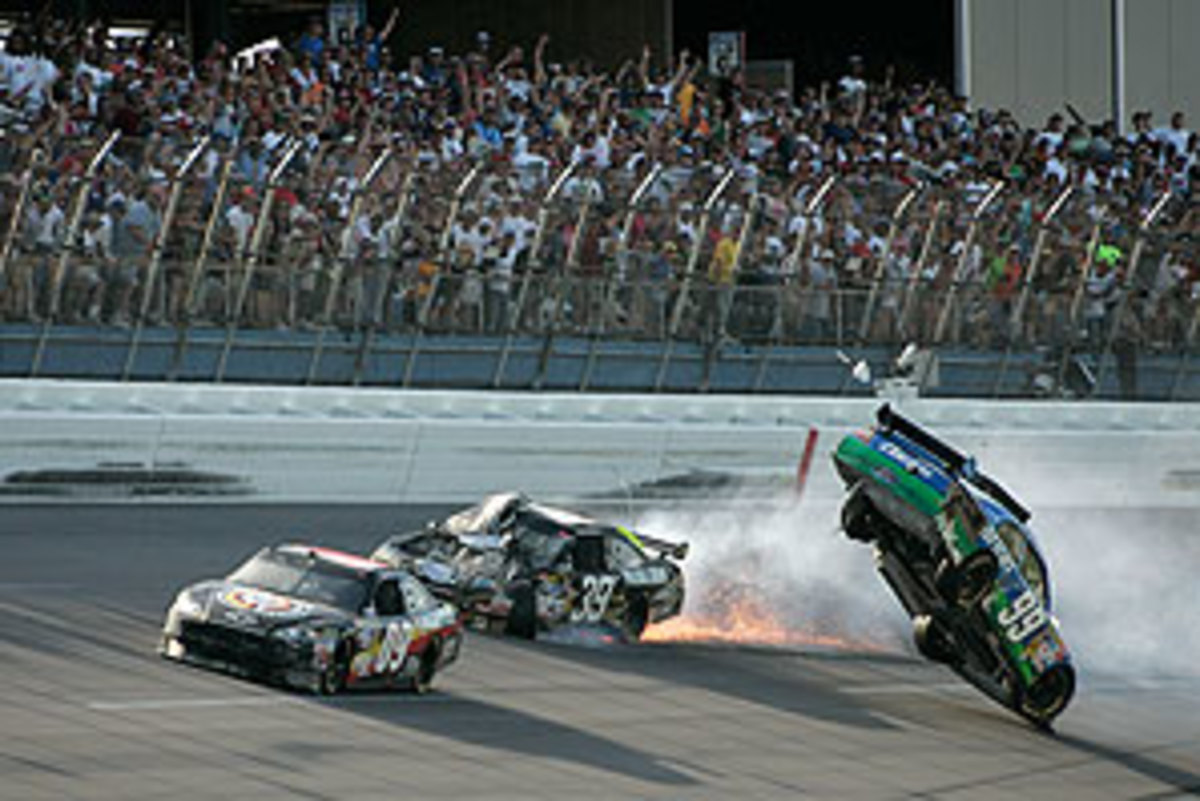
Off-road racing tragedy highlights potential danger in other series
NASCAR's best may be 'having at it' this season, but those behind the wheel aren't the only ones whose safety can be put at risk under the new stance come race day.
The deadly off-road racing crash in the Mojave Desert on Aug. 15, which claimed the lives of eight people and injured 12 others, reminded everyone that spectators are not isolated from danger that can move swiftly from the track into the onlookers.
"The situation in California ... people have to know they're taking a risk when you go out somewhere and you are that close to cars going that fast," said Dr. Diandra Leslie-Pelecky, author of The Physics of NASCAR. "Even if it's only going 50 mph, these were big trucks."
They're clear differences between what happened in the California desert and the far more isolated incidents of fan injury in NASCAR and IndyCar. During the former, the majority of the spectators weren't behind guardrails, catchfences or SAFER barriers. There was an acceptance of pushing the envelope by standing only a few feet away from cars speeding down the straightaway, fans angling to get the best view of the action.
By comparison, today's version of NASCAR is safer than yesterday's. The IndyCar of today is better in safety practices than the open-wheel series of 10 years ago. But some would argue that it was only after friends were buried, legends laid to rest and spectators caught in a crossfire of shrapnel and debris that changes were made.
"Yes, I have always felt safe, but I was lying to myself," lifelong NASCAR fan Dan Laycock said. "You are never safe if you're close to the track. I have grown up at the track, so I watch more than the race; never turn your back to the race cars.
"Off-road racing has never had proper safety barriers, they have just been lucky," he added. "The off-road fans always have stood near the course and some have been killed in the past and a big deal [wasn't made about it]. But since they now have killed eight and hurt 12, it's a big deal."
NASCAR and IndyCar aren't insulated from the sort of tragedy seen in California. A few months ago, two fans were injured during Mike Conway's terrifying crash at the Indy 500. In April 2009, Carl Edwards' frightening launch into the catchfence at Talladega sent debris flying into the stands and landed seven people in the hospital. And try as engineers might to anticipate every worst-case scenario, the variables that cause some of today's most frightening crashes can't always be predicted.
"Things like the Carl Edwards going up in the air at Talladega. It was one of those things where a bunch of things came together at the same time to make that happen," Dr. Leslie-Pelecky said. "Because his roof flaps went up and he was starting to come down, but there was another car going right by him.
"Most of the studies people do when they try to figure out how do I make something be safe is, let's take a single car and have it hit a wall or go up in the air. Well, now we're starting to see situations where there are multiple cars involved, and modeling something where you have two vehicles instead of one, it's not twice as hard, it's a lot harder than twice as hard.
"If you have a race car, a NASCAR stock car, going 180 mph, that has the same energy as 2.2 pounds of TNT," said Dr. Leslie-Pelecky. "So you have a very heavy object going very fast, there is no way that you can make that 100 percent safe."
As drivers trade paint and "have at it" with NASCAR entering its Chase for the title, and with IndyCar venturing into its own championship stretch, that's just the reality racing fans have to continue to accept.





